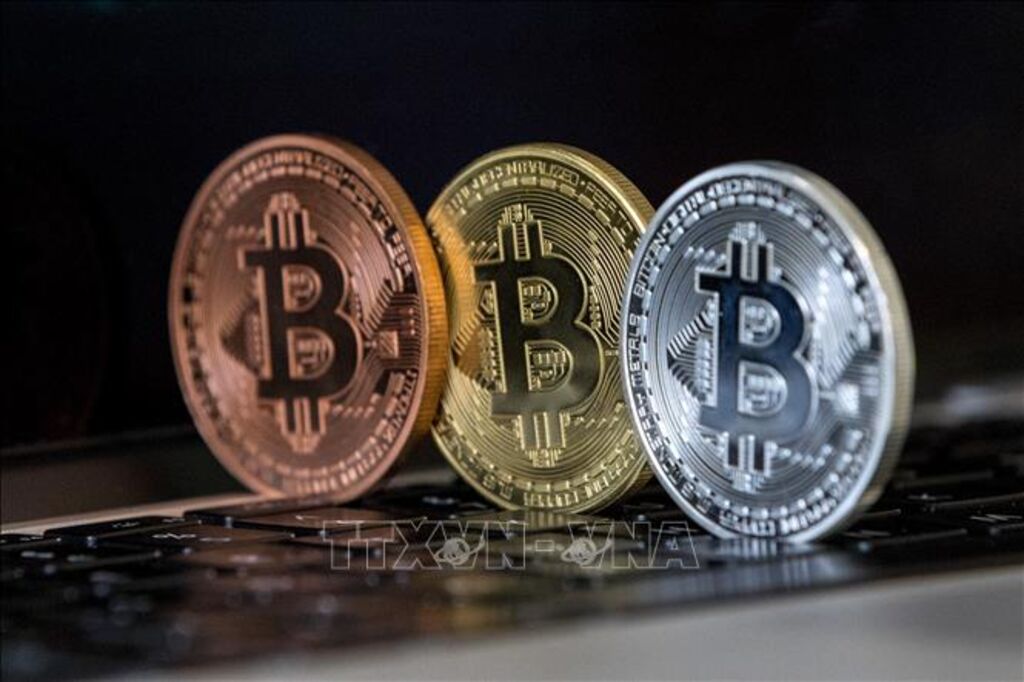 |
| Illustrative image of Bitcoin, a digital currency__Photo: VNA |
* Scheduled to be passed by the National Assembly in this October, the latest draft Law on Digital Technology Industry introduces a chapter on digital assets, laying a legal framework for the management of crypto assets and the digital asset market.
Under the draft law, digital asset is defined as a type of asset that is expressed in the form of digital data and created, issued, stored, transferred and authenticated by digital technologies in the electronic environment.
Virtual asset in the electronic environment is a type of digital asset that may be used for the purpose of exchange or investment.
Meanwhile, crypto asset is a type of digital asset that is authenticated by encryption technology or other similar digital technologies in the process of creation, issuance, storage and transfer.
Noteworthily, virtual assets in the electronic environment and crypto assets do not include securities, digital forms of legal tenders and other financial assets specified by civil and financial laws.
The competence to manage digital assets, virtual assets in the electronic environment, and crypto assets in specialized fields would comply with the Government’s regulations in conformity with practical conditions.
* In another move, the Ministry of Finance (MOF) has recently submitted to the Government a draft resolution allowing the deployment of regulatory sandbox for issuance and trading of crypto assets.
In the pilot period, the Government would strictly control the scope of the digital asset market and, at the same time, establish standards to protect investors’ interests.
One of the most important issues when formulating a legal framework for digital assets is how to balance two factors, i.e., protecting investors and boosting innovation. This requires the strict management by various state management agencies, including the Ministry of Finance, Ministry of Public Security, State Bank of Vietnam and other relevant agencies.
Accordingly, the MOF would devise solutions to support startups in the digital asset field and concurrently establish rules to ensure market transparency. The State Bank of Vietnam would be tasked to monitor the impact of digital assets on the monetary policy and financial system. Meanwhile, the Ministry of Public Security would take charge of preventing frauds, scams and money laundering in the digital asset market.
Bui Hoang Hai, Vice Chairman of the State Securities Commission, highlighted that the coordination among these agencies would help create a secure digital asset ecosystem, paving the way for innovative businesses.
He pointed out that crypto assets are currently being issued and traded in substantial volumes, characterized by high transaction values and intricate structures, posing challenges and risks to the stability of the financial system.
The sandbox would provide regulatory agencies with more time to thoroughly assess the feasibility of policies and consider conditions for practical implementation. It would help inhibit such illegal activities as money laundering and terrorist financing, protect investors, and lay the foundation for the development of a transparent, secure and sustainable financial market, he added.
According to the MOF, when digital assets are recognized and traded as a type of legal asset, transactions related to digital assets would be taxed under current tax laws. However, in order to avoid reducing market attractiveness, the Government might consider applying preferential tax rates in the initial stage and adopt the mechanism to control tax evasion and tax fraud in this field.
According to the Vietnam Blockchain Association, in 2024, up to 17 million Vietnamese people possessed crypto assets. The influx of digital assets into Vietnam reached USD 105 billion, nearly four times the total FDI inflow and approximately one-fourth of the country’s GDP.- (VLLF)









